T H E S T E A M B O A T A R A B I A
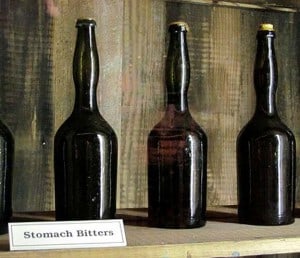 Looking at famed Civil War author Jim Schmidt’s interview with Andrew W. Hall and the Galveston-Houston Packet this morning made me think of the bottles stored on these and other steamboats that traveled our waterways. While looking at the Steamboat Bertrand cargo recently (see: Looking at some of the Bitters Bottles on the steamboat Bertrand – Part 1 and Looking at some of the Bitters Bottles on the steamboat Bertrand – Part 2), I was reminded of the Steamboat Arabia in Missouri. I also did a post recently where some Charles Lediard products were found on the SS Republic (see: Charles Lediard and his Liquor Products). What amazes me most is that the Arabia was found beneath 45 feet of silt and topsoil as the Missouri River had shifted 1/2 of a mile from where the Arabia was found. I suppose I always assumed great rivers shifted course over eons of time and not in 130 or so years.
Looking at famed Civil War author Jim Schmidt’s interview with Andrew W. Hall and the Galveston-Houston Packet this morning made me think of the bottles stored on these and other steamboats that traveled our waterways. While looking at the Steamboat Bertrand cargo recently (see: Looking at some of the Bitters Bottles on the steamboat Bertrand – Part 1 and Looking at some of the Bitters Bottles on the steamboat Bertrand – Part 2), I was reminded of the Steamboat Arabia in Missouri. I also did a post recently where some Charles Lediard products were found on the SS Republic (see: Charles Lediard and his Liquor Products). What amazes me most is that the Arabia was found beneath 45 feet of silt and topsoil as the Missouri River had shifted 1/2 of a mile from where the Arabia was found. I suppose I always assumed great rivers shifted course over eons of time and not in 130 or so years.
Over time, the river shifted a half a mile to the east. The site of the sinking is in present-day Kansas City, Kansas.
Let’s look a little closer at the Arabia steamboat and see what bottles were recovered. I am particularly interested in seeing if Kelly’s Old Cabin Bitters, OK Plantation Bitters, Hostetter’s Stomach Bitters and any of the other famed bitters products were on board.
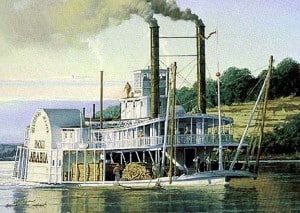 [Wikipedia] The steamboat Arabia was a side wheeler steamboat which hit a snag in the Missouri River and sank near what today is Parkville, Missouri, on September 5, 1856. It was rediscovered in 1988 by a team of researchers. Today, the artifacts recovered from the site are housed in the Arabia Steamboat Museum.
[Wikipedia] The steamboat Arabia was a side wheeler steamboat which hit a snag in the Missouri River and sank near what today is Parkville, Missouri, on September 5, 1856. It was rediscovered in 1988 by a team of researchers. Today, the artifacts recovered from the site are housed in the Arabia Steamboat Museum.
The Arabia was built in 1853 on the banks of the Monongahela River in Brownsville, Pennsylvania. Its paddlewheels were 28 feet across, and its steam boilers consumed approximately thirty cords of wood per day. The boat averaged five miles an hour going upstream. The boat traveled the Ohio and Mississippi rivers before it was bought by Captain John Shaw, who operated the boat on the Missouri River. Her first trip was to carry 109 soldiers from Fort Leavenworth to Fort Pierre, which was located up river in South Dakota. The boat then traveled up the Yellowstone River, adding an additional 700 miles to the trip. In all, the trip took nearly three months to complete.
In spring of 1856, the boat was sold to Captain William Terrill and William Boyd, and it made fourteen trips up and down the Missouri during their ownership. In March, while heading up river, the boat collided with an obstacle and nearly sank. Repairs were made in nearby Portland. A few weeks later the boat blew a cylinder head and had to be repaired again. The rest of the season was uneventful for the boat until September 5.
On September 5, 1856, the Arabia set out for a routine trip. At Quindaro Bend, near the town of Parkville, Missouri, the boat hit a submerged walnut tree snag (see picture above of actual tree part found in hull). The snag ripped open the hull, which rapidly filled with water. The upper decks of the boat stayed above water, and the only casualty was a mule that was tied to sawmill equipment and forgotten. The boat sank so rapidly into the mud that by the next morning, only the smokestacks and pilot house remained visible. Within a few days, these traces of the boat were also swept away. Numerous salvage attempts failed, and eventually the boat was completely covered by water. Over time, the river shifted a half a mile to the east. The site of the sinking is in present-day Kansas City, Kansas, although, as described below, many of the remnants have been removed to a museum in Kansas City, Missouri.
In the 1860s, Elisha Sortor purchased the property where the boat lay. Over the years, legends were passed through the family that the boat was located somewhere under the land. In the surrounding town, stories were also told of the steamboat, but the exact location of the boat was lost over time.
In 1987, Bob Hawley and his sons, Greg and David, set out to find the boat. The Hawleys used old maps and a proton magnetometer to figure out the probable location, and finally discovered the Arabia half a mile from the river and under 45 feet of silt and topsoil.
The owners of the farm gave permission for excavation, with the condition that the work be completed before the spring planting. The Hawleys, along with family friends Jerry Mackey and David Luttrell, set out to excavate the boat during the winter months while the water table was at its lowest point. They performed a series of drilling tests to determine the exact location of the hull, then marked the perimeter with powdered chalk. Heavy equipment, including a 100-ton crane, was brought in by both river and road transport during the summer and fall. Twenty irrigation pumps were installed around the site to lower the water level and to keep the site from flooding. The 65-foot-deep wells removed 20,000 US gallons per minute from the ground. On November 26, 1988, the boat was exposed. Four days later, artifacts from the boat began to appear, beginning with a Goodyear rubber overshoe. On December 5, a wooden crate filled with elegant china was unearthed. The mud was such an effective preserver that the yellow packing straw was still visible. Thousands of artifacts were recovered intact, including jars of preserved food that are still edible. The artifacts that were recovered are housed in the Steamboat Arabia Museum.
I soon located what I had traveled this distance to see — bottles! Food bottles embossed ‘Well’s, Miller & Provost‘ filled several shelves, many had original lead labels and contents. Earlier ‘large size’, Dr. Hostetter’s Bitters, were in abundance, as were a number of unembossed ‘lady’s leg’ bottles, both having original contents. Peppersauce bottles with the desirable ‘Western Spice Mills‘ embossed appeared in several areas, as did a sprinkling of various pontiled cologne and scent bottles. One case exhibited several rows of medicine bottles.
Another case exhibited several rows of medicine bottles: ‘Mexican Mustang Liniment’, ‘McGuire Druggist, St. Louis’, and ‘Nerve and Bone Liniment‘, all still in their original contents. Ink bottles, still in their original packing box, and early case gins were also to be found.
To me the most rewarding display of all was a portion of one wall holding row after row of early Scroll flasks! Approximately 100 were on display, all being pint and quart size. They were displayed in alternating rows of deep aquamarine and medium yellow green and all sparkled like the day they were blown!
Treasures of The Steamboat Arabia
What a surprise. Obviously the cargo was meant for the small grocers, hardware stores, businesses and eating and drinking establishments. The Steamboat Arabia Museum is definitely a place I want to visit. What and where do you suppose all those Scroll Flasks were headed and doing on board?
A R A B I A G A L L E R Y
Read More: Treasures of The Steamboat Arabia
Read More: Steamboat Arabia – A Historian’s Blog (great!)

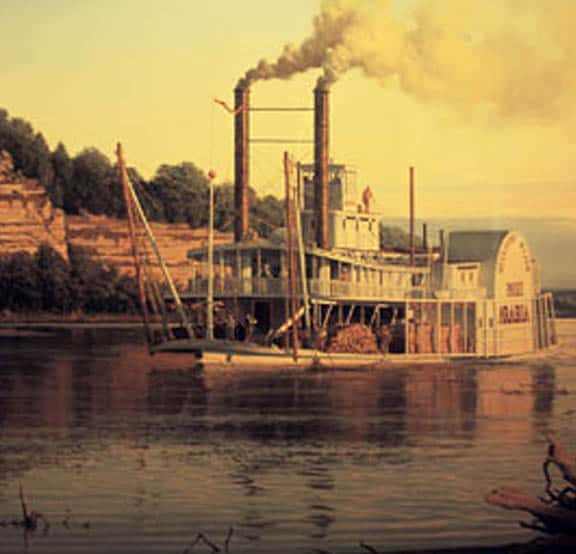
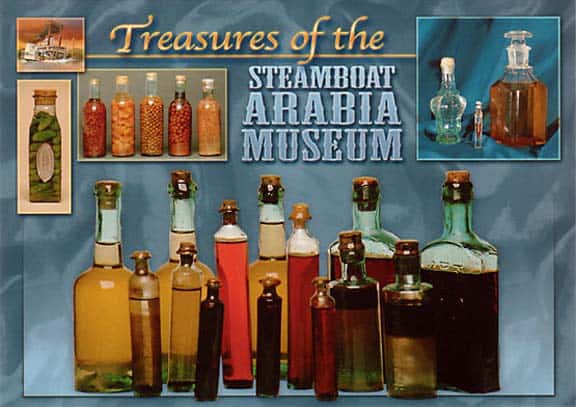
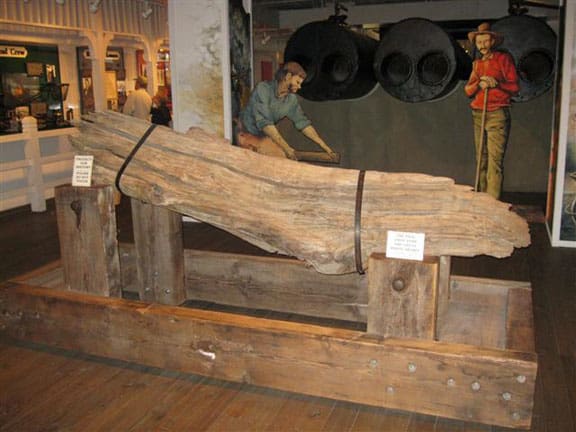
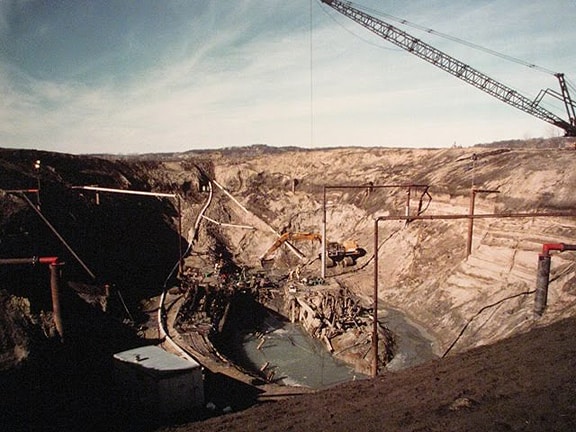
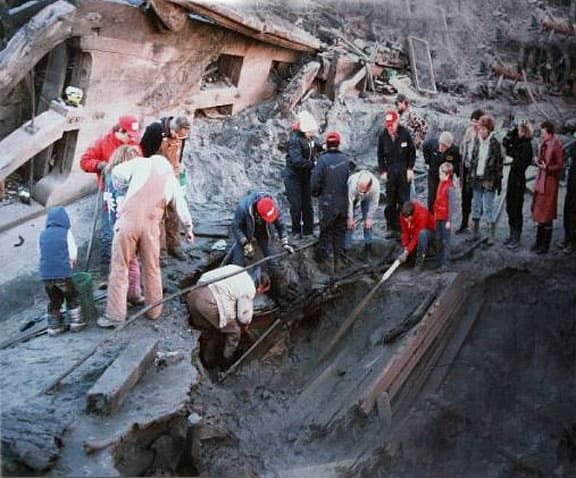
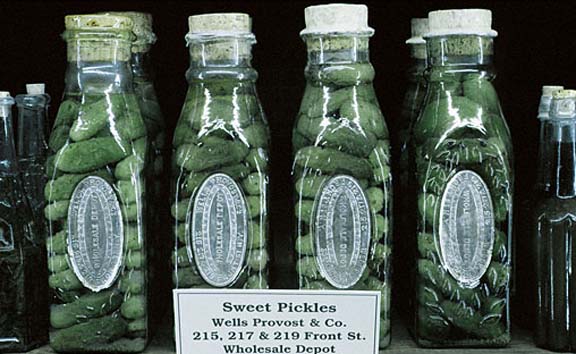
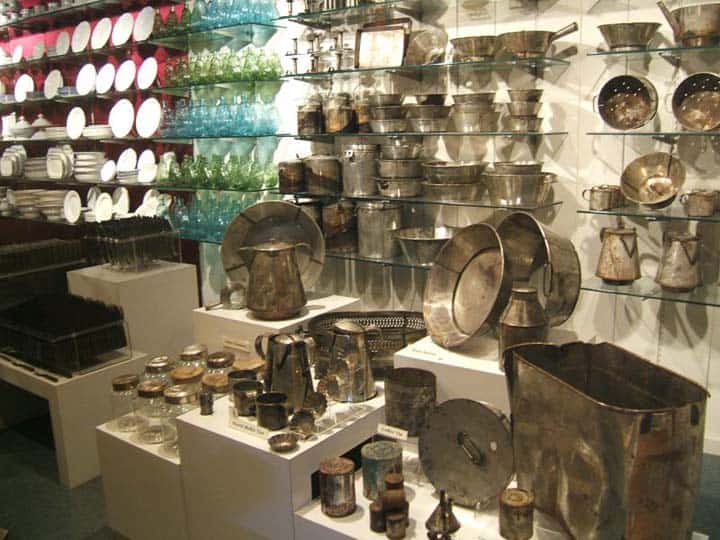
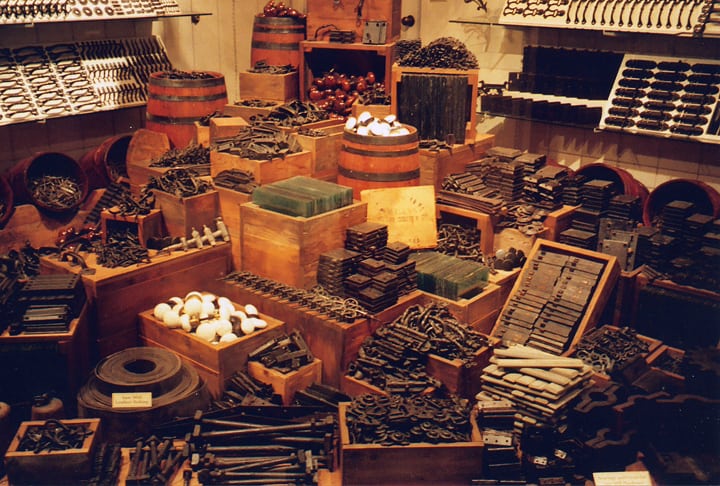
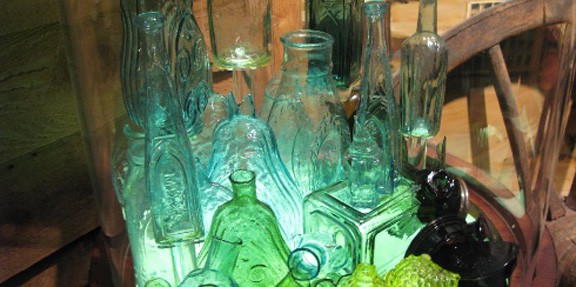
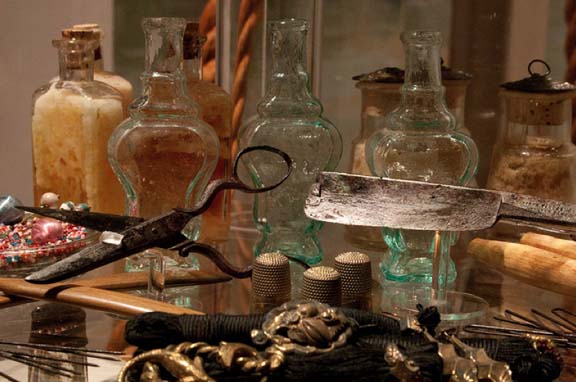
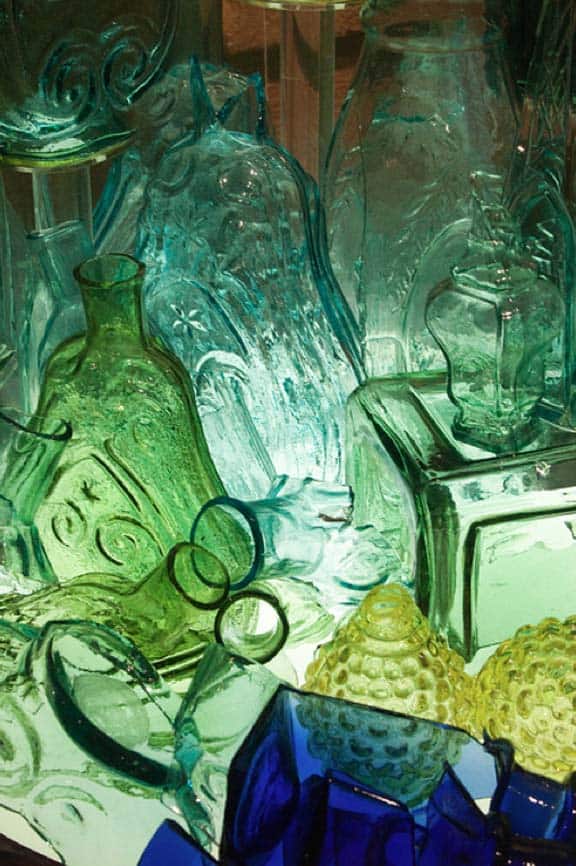
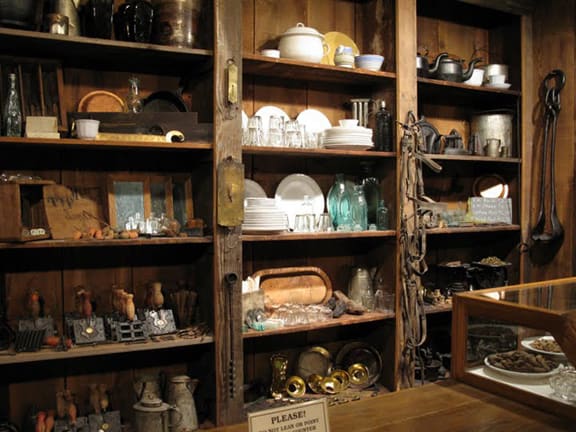
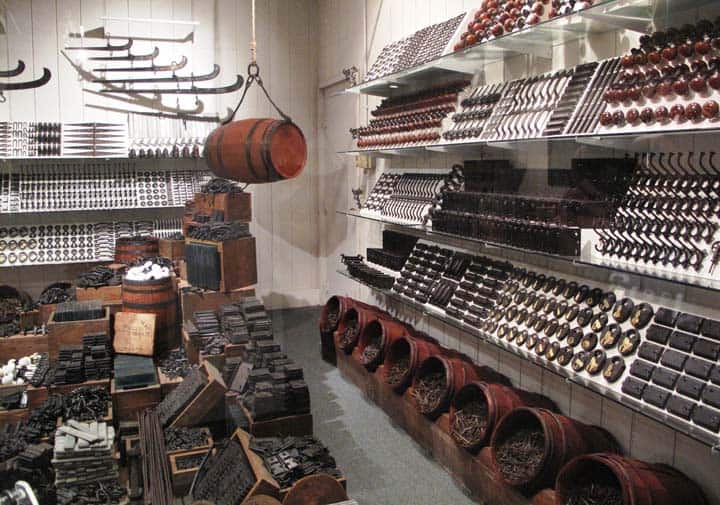
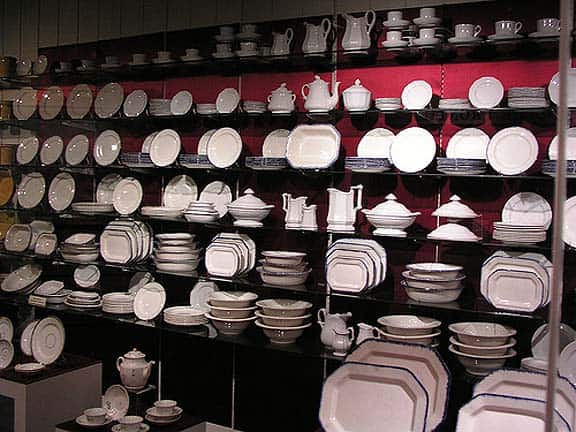
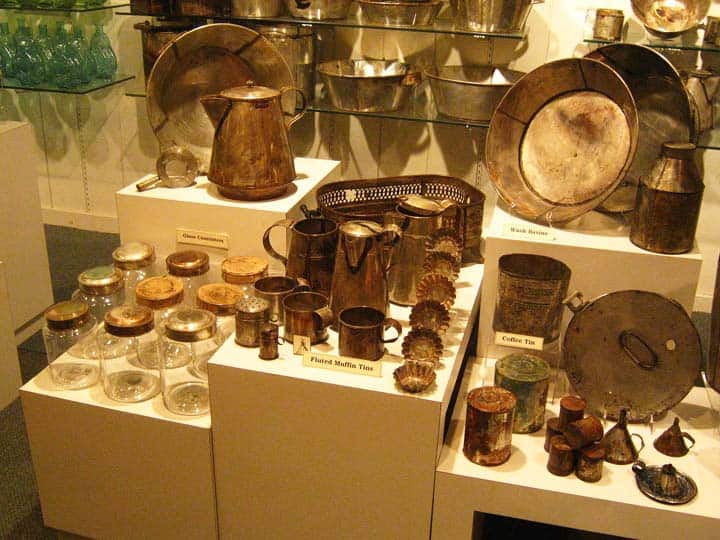
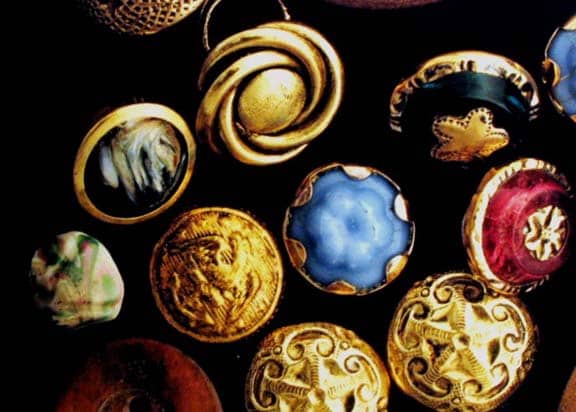
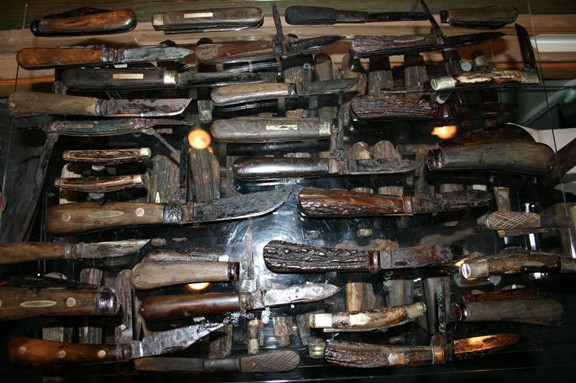
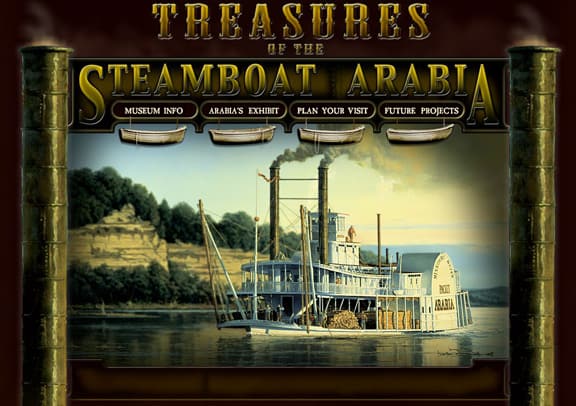






The beauty of the Arabia recovery is that it was accomplished, and quite well, by private citizens and without one bit of government money or assistance. Great family, those Hawleys.
Ferd,
Was reading your article today on the Steamboat of Arabia. Brought back some very delightful memories. The year was 1996. I was back in Kansas City for the funeral of my Grandma.My Aunt & Uncle thought I would enjoy the museum knowing that we were collectors of bottles and lovers of history as well. Wandering through the museum taking as many photos as I could to bring home to share with Ed since I was solo on the trip. A humerous memory of my time in the museum. I was in the room where you photographed the wall of Scroll flasks and over to the right at the time was a small round case of small pontiled colognes and a few scroll flasks mixed in. The information in that case described the scroll flasks as cologne bottles. Well being the young wippper snapper I was , thinking I knew it all. LOL! I sparked a conversation with the most delightful Grandma standing around sharing info of the Museum with visitors. I was pretty snarky telling her that I thought it was pretty funny they had the scroll flasks listed as colognes and really wondered where they got that info from. Well she was so sweet and shared that she was the Mother of the family that did the excavation on the ship and that was what they had been told were in the scroll flasks. I was pretty embarrassed to say the least. Thanks for rekindling that delightful memory. Tami